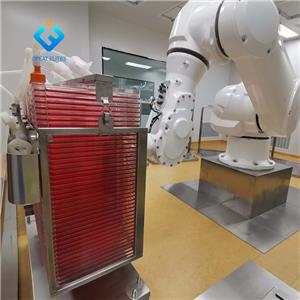Rabies and its vaccine
rabies-summary
Rabies is an animal borne infectious disease caused by rabies virus infection. Rabies susceptible animals mainly include canines, cats and chiroptera animals. Birds, fish, insects, lizards, turtles and snakes do not infect and transmit rabies virus. Rabies virus mainly invades human body through damaged skin or mucous membrane. Rabies can be characterized by mania or paralysis in clinic. Rabies transmitted by dogs are generally manic, while rabies transmitted by vampire bats is generally paralytic. The manic patients are mainly characterized by vague consciousness, phobic spasm, and autonomic nervous dysfunction (such as dilated pupils and excessive salivation). Paralytic patients are conscious, but have neuropathic symptoms similar to Guillain Barre Syndrome (GBS). Without intensive care, patients will die within 1-5 days after nervous system symptoms.
The incubation period of human rabies ranges from 5 days to several years (usually 2-3 months, rarely more than 1 year). The length of the incubation period is related to the virulence of the virus, the nerve distribution of the invasion site and other factors. The more the number of viruses, the stronger the virulence, the richer the nerves at the invasion site, and the closer to the central nervous system, the shorter the incubation period [1].
Rabies vaccine for human use-Immune principle
Rabies virus RNA encodes five proteins: nucleoprotein (N), M1, M2, envelope glycoprotein (G) and L, of which G protein is the most important antigen of rabies virus, which can effectively stimulate the proliferation of specific helper T cells (Th) and cytotoxic T cells (CTL), and induce the body to produce specific antibodies. G protein specific antibody is the most important protective antibody of rabies vaccine. The immune effect mainly depends on its antigen epitope, structure, protein folding and glycosylation.
The body produces IgM (Immunoglobulin M) antibody about 7 days after rabies vaccine inoculation, and IgG (Immunoglobulin G) antibody about 14 days later and rises rapidly. IgM and IgG antibodies have the ability to neutralize the virus, and some neutralizing antibodies can enter the nerve cells infected with rabies virus to inhibit virus replication. The peak of CTL appears 12 days after immunization, which can clear rabies virus in the central nervous system. Th cells can enhance anti nucleoprotein and glycoprotein antibodies, and also can increase the protective effect.
The nucleoprotein sequence of rabies virus is highly conserved, with amino acid homology of 78% to 93%. As of 2016, rabies virus of genetic lineage I is the most common virus type causing human rabies, and also the only virus type used in rabies vaccine production.
History
In 1882, Mr. Louis Pasteur, a Frenchman, successfully invented the rabies vaccine for human use for the first time. Later, he went through the early animal nervous tissue vaccine, bird embryo vaccine, and cell culture crude vaccine, and developed into the purified vaccine of primary hamster kidney cells, chicken embryo cells, human diploid cells, and Vero cell culture with increasingly improved technology in the 21st century.
Human Diploid Cell Rabies Vaccine (HDCV) was first created by Wistar Research Institute in the United States, and then the Merieux Research Institute in France obtained the production license in 1974. The incidence of adverse reactions after vaccination was low, the symptoms were mild, and the immune effect was good. However, human diploid cells are slow in proliferation, low in virus production, high in cost and expensive in price, so they cannot be widely used.
The purified Vero cell rabies vaccine was approved for production by the Merieux Research Institute of France in 1985. It has the same safety and efficacy as the human diploid cell vaccine with light adverse reactions and good effects. And because of the high titer of rabies virus, large production of vaccine and low price, it has been widely used in the world.
According to the clinical observation of different manufacturers, the adverse reactions of purified chicken embryo cell vaccine and primary hamster kidney cell vaccine are mild, and the immune effect, safety and effectiveness are good.




